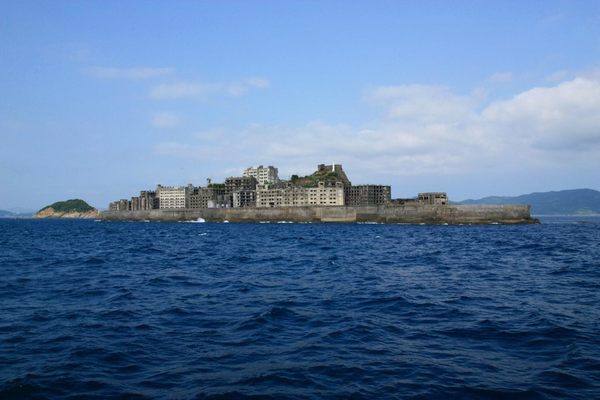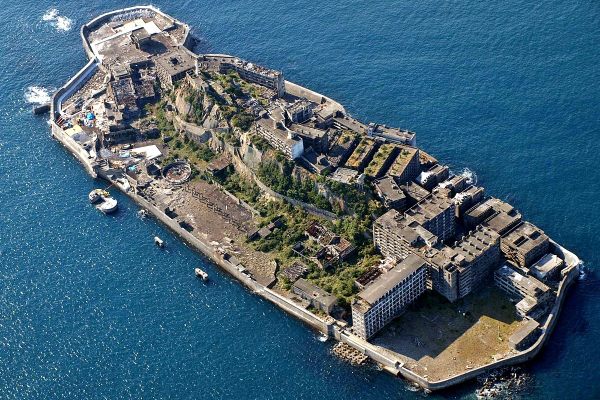How I Spent My Summer Vacation: Living Alone at the End of a Fjord in a Faroe Islands Ghost Town
Mists of Mùli (all photographs by the author)
In the Faroe Islands, automatic transmission vehicles are hard to come by. And I soon found that my quick practice run around the block in a borrowed pick-up truck only moments before I left for the airport in Boston hadn’t prepared me for a multi-island odyssey along wildly curved one-lane roads and through aging mountain tunnels.
After stalling the car in the unlit, single-track tunnel between Árnafjørður and Hvannasund (and being unable to restart it as a set of headlights barreled toward me), I wound my way along a wrinkled gravel road gouged from the side of a mountain to its terminus, the now-abandoned village of Mùli at the tip of the northern island of Borðoy.
Looking Down the Fjord from Mùli To Hvannasund
Author’s accommodations in Mùli
As I stepped out of the car I was instantly enveloped by a crushing silence — a vacuum of human sound that swallowed even the miniature noise of gravel under my shoes as I walked over to the house that I’d rented from a woman living in the capital. Out the kitchen window, across the fjord, the towering pyramid of rock, Malinsfjall, cast deep shadows across this isolated microcosm. In a golden un-night, I heard the roar of quiet just beyond the waves that crashed against the cliffs below the deserted hamlet.
Malinsfjall
Mùli is (was) one of the most remote settlements in this already remote cluster of 18 islands in the North Atlantic. A kind of secondary isolation — a place removed from a place removed. At a tiny grocery store somewhere along the way, I asked for directions to this place, and it took no fewer than five people to figure out where I was headed, and when they finally realized where I was going, five faces looked back with a mixture of wonder and dread. None of them knew how to get there.
People lived in Mùli until the mid-1990s, but now only a shepherd regularly makes his way down the warbled road to check on the sheep that still graze among the precious slivers of flat land on the mountainsides. And me, an anthropologist in search of the cultural meaning of isolation. I think I’m close.
Sheep barn in Mùli
Mùli
Old staircase to the abandoned wharf
The village was the last to be connected to the country’s power grid in the late 1970s, and road access didn’t reach Mùli until 1989. Before the road, residents relied on intermittent boat (and later, helicopter) service, and had to haul goods up a steep, twisted stairway from the tiny landing. To attend church services, a boat would bring them across the fjord to the larger village of Viðareiði on the neighboring island of Viðoy. I tried to imagine what it would be like living at the end of an island in this far-flung archipelago at any time other than that exact moment. This place is a trace of a time when survival was more hard-won, a palimpsest of everyday ways of life that have passed away. I can read the struggle in the landscape made out of thin bands of inhabitation that encircle these mountain islands in the middle of nowhere. It’s beautiful and terrible.
When I occupied the little black house in Mùli, in that tiny slice of a summer, the sun only pretended to set, dipping behind the mountains, only to resurface a couple of hours later, illuminating the bulletproof quiet of this place. I spent my days writing at the kitchen table, sneaking furtive glances at Malinsfjall as the clouds drew strange patterns on its eerie geology. I became obsessed with my heartbeat. It seemed to get louder each day, reminding me of my detachment from the rest of the human world. I was the only living thing in this ghost town at the edge of the world.
Outbuilding in Mùli
Remains of a building in Mùli
Turf roof in Mùli
Periodically, some wayward tourists would find their way to my adopted hometown, and in that moment, I became a ghost in the ghost town: the movement of curtains behind dusty windows, the distant sound of music in between gusts of wind, the figure moving silently in a half-lit kitchen.
Every couple of days, I’d brave the darkened tunnels and make the trip to Klaksvik, the “second city” of the Faroe Islands, to stock up on supplies and check my email. Each time I made the journey, I felt like I was entering an odd little dreamworld, a place of people, as if I wasn’t one of them anymore.
In a way, I’d become more remote as result of my place. I’d become a crooked, unhinged shadow, removed from people and their sounds. It is a strange thing to purposefully inhabit an abandoned place. It’s a kind of archeology of the present, like I hadn’t given the place time to decompose, to accumulate layers of hidden meaning. It’s as though I wanted to see the world of the last person to live there through their eyes. And in that magically bizarre moment of being there, I caught a few glimpses into the everyday afterlives of Mùli.
Malinsfjall from the road to Mùli
Road to Mùli













Follow us on Twitter to get the latest on the world's hidden wonders.
Like us on Facebook to get the latest on the world's hidden wonders.
Follow us on Twitter Like us on Facebook